Exceptionnelle et rarissime peinture impériale chinoise"La grande Revue", règne de Qianlong (1736-1795)
Peinture impériale Qing : « La Grande Revue », IV « Manœuvres ». photo courtesy MARC LABARBE
Rouleau horizontal en encre et couleurs sur soie, dû à plusieurs peintres de la Cour. .
Ce rouleau horizontal en encre et couleurs sur soie, dû à plusieurs peintres de la Cour, date de 1747 ou 1748. Il conclut une série de quatre, immortalisant une revue militaire ayant mobilisé quelque 20 000 hommes.La localisation actuelle de la première de ces peintures : Xingying (L’empereur se rend au camp) reste inconnue. Elle représenterait la suite impériale se rendant au lieu de la Revue, le parc du SudNanyuan, où les empereurs mandchous tenaient des manœuvres militaires.
La seconde, Liezhen (Les troupes se rangent en bataille) toujours conservée au Palais de Pékin, sert de modèle aux trois dernières de la série. Elle offre le coup d’œil de Sa Majesté depuis le bastion où a été dressée sa tente de commandement. Toutes les unités sont soigneusement représentées en formation : deux ailes de cavalerie flanquent le corps de bataille des Huit bannières.
Sur le troisième rouleau, Yuezhen (Passer les troupes en revue) Sa Majesté, inspecte les troupes, chevauchant derrière les mousquetaires et les artilleurs, devant la cavalerie, dont les rangs se sont écartés sur le passage du souverain.
Enfin, le quatrième, Xingzhen (Manœuvres) objet de cette vente, saisit l’instant où une salve de toutes les bouches à feu noie les premiers rangs d’une épaisse fumée.
Dimensions : Longueur totale, 24,214 m, longueur de la peinture, 18,04 m, largeur totale, 69,2 cm, diamètre du rouleau, 12 cm. Estimation : 3 millions d'euros - 4 millions d'euros
Les Grandes revues dayueremontent à 1633. Démonstrations de force pour impressionner la noblesse mandchoue et les princes tributaires, elles combinent manœuvres militaires et mise en scène de la majesté impériale. L’empereur Shunzhi(r. 1644-1661) décrète en 1656 qu’elles auraient lieu tous les trois ans au parc du Sud. Les annales de Qianlong mentionnent celle de 1739 comme première grande revue de son règne. Les Grandes revues dayueremontent à 1633. Démonstrations de force pour impressionner la noblesse mandchoue et les princes tributaires, elles combinent manœuvres militaires et mise en scène de la majesté impériale. L’empereur Shunzhi(r. 1644-1661) décrète en 1656 qu’elles auraient lieu tous les trois ans au parc du Sud. Les annales de Qianlong mentionnent celle de 1739 comme première grande revue de son règne.
La peinture se termine sur une longue inscription portant son titre en grands caractères dans le style des scribes : Dayue disi tu, xingzhen « La Grande revue, IV : Manœuvres. » Elle décrit les mouvements des troupes sous les yeux de Sa Majesté, qui a rejoint son poste de commandement. Des sonneries de conques, tambours et gongs règlent les manœuvres. Des bannières rouges commandent des salves de l’artillerie et des mousquetaires. Après neuf marches et contre marches, ponctuées de décharges des bouches à feu, la revue prend fin. L’empereur et sa suite se retirent, ôtent leurs armures, avant qu’un banquet ne récompense les troupes. Le texte énumère enfin les peintres et les chroniqueurs ayant conservé la mémoire de l’événement ; aucun de leurs sceaux n’est apposé.
Académiciens et hauts fonctionnaires, ministres, les rédacteurs du colophon sont connus pour leurs talents de calligraphes en régulière, se référant souvent aux grands maîtres des Tang. Il s’agit de Wang Youdun (1692-1758) Liang Shizheng (1697-1763) Ji Huang (1711-1794) Zhang Ruo’ai (1711 ou 1713-1746) et Zhuang Yougong (1713-1767).
Dix peintres de l’académie Impériale de peinture huayuan ont travaillé sur les rouleaux de La Grande revue, mais Jin Kun, actif dans la première moitié du XVIIIe siècle, reste responsable de la bonne exécution de l’œuvre. Ding Guanpeng, actif entre 1726 et 1771, fut l’un des peintres favoris de Qianlong. Les autres sont Wu Gui, Jin Sheng, Yao Wenhan, Zhang Tingyan (?-1794) Chen Yongjie, Cheng Zhidao (actif entre 1740 et 1796) Cheng Liang et Lu Zhan.
Les archives des Ateliers de la Maison impériale Neiwufu zaobanchu content l’histoire de la peinture des quatre rouleaux de La Grande revue. Après une erreur dans la position des troupes des différentes bannières, la peinture doit être reprise à partir d’avril 1746. Le 7 janvier 1748, Qianlong ordonne : « La Grande revue va bientôt être terminée. Faites faire un modèle de boîte pour chaque rouleau, et présentez les Nous pour examen. » La maquette des écrins de laque gravée rouge ayant reçu l’assentiment de l’empereur, il décide qu’y soit encore inscrite la date Qianlong dingmao nianzhi « Fait en l’an dingmaode l’ère Qianlong (1747) ». Cependant, une dernière pièce nous apprend que la livraison de l’ensemble dans ses écrins ne fut effectuée que le 20 juin 1749.
La commande a pu intervenir dès 1740. Même une dizaine d’artistes peuvent avoir pris 7 ans pour réaliser une telle série de rouleaux en style miniaturiste. Il faut encore compter le temps de la monture – un an – et de la fabrication des écrins.
Publication: Le Shiqu baoji xubian (Suite aux Œuvres précieuses conservées à la pinacothèque Impériale) connue sous le nom de "Catalogue impérial", contient une notice (pp. 1871-1875) sur les quatre rouleaux de La Grande revue. Citant les colophons in extenso, elle précise les circonstances et la date de l’événement représenté.
Provenance: D’abord déposée au palais de l’Estime de l’éclat des vertus civiles Zhonghuagong, La Grande revue a certainement rejoint les portraits des empereurs défunts au Shouhuangdian (palais de la Continuation de l’empire), à la mort de Qianlong(1799). Ce rouleau fait partie d’une collection privée française depuis le début du XXe siècle.
清乾隆初年宫廷画《大阅第四图·行阵》
设色绢画手卷,为一套四幅最后一幅。画院画师乾隆十二、十三年完工。永记集两万多兵马一次大阅。
整套第一幅《幸营》如今藏处失详。概绘皇上、卤簿出宫往南苑。是为清代帝王狩猎、阅兵之处。第二幅《列阵》仍藏北京故宫博物院,成后三幅之蓝本。画皇上坐晾鹰台上黄帐内宝座所能看望一览。兵马一一列阵,八旗主阵两边附两翼骑兵。前为火器营,后卫乃前锋护军
护军骁骑等队伍。第三幅《阅阵》描写皇上骑白骏,处火器营后、骑兵前检阅八旗兵马。
此次拍卖乃第四幅《行阵》。画火器连环齐发一瞬间,浓烟掩蔽前列。
尺寸:全长:24.214米;画心长:18.04米;总宽:69.20米;直径:12釐米
大阅之礼始于后金天聪七年(1633)。同时进行大阅兵与表扬皇威来威胁旗人、属王。清世祖顺治十三年定每三年於南苑行大阅礼。《清史稿·第十卷·高宗本纪一》曰:“[乾隆四年十月]… 癸卯,上幸南苑行围。十一月丙午,上行大阅礼。”是乃乾隆间首次大阅。
画尾有长跋,题曰“大阅第四图·行阵”,隶书。后文细述兵马鸣螺、擂鼓则进,鸣金则退等行动。列出行笔记录本次大阅文豪大臣:汪由敦(1692-1758) 、梁诗正(1697-1763) 、嵇璜(1711-1794) 、张若霭(1711 或 1713-1746)与庄有恭(1713-1767)。均为翰林学士、达官显贵,唐欧、柳派楷书名家。最后列出画院十名画师,即监督画工者金昆、高宗得意画家丁观鹏,以及吴桂金声姚文瀚张廷彦陈永价、程志道程梁与卢湛。均无印鉴。
内务府造办处档案提供《大阅图》绘画过程宝贵史料。 乾隆十一年闰月皇上发现八旗佈置有错,命画工改画,告竣时再请旨。乾隆十二年十二月[…]初七日,传旨曰:“大阅图将赶画完;每卷做匣样呈览[…]钦此!”朱红雕漆画匣样品使龙颜大悦,命刻“乾隆丁卯年制”焉。然十四年五月初六方“将画得大阅图持进交讫。”画或许乾隆五年即订。如此一套四卷工笔长画,连十名画师须经七年方能告竣并不怪矣。画后装裱、造雕漆匣又必花一二春秋矣。
著录:《石渠宝笈续编》(台北故宫博物院1971年本1871-1875页)有著录。
来历:原藏重华宫。高宗崩后转藏寿皇殿。二十世纪初以来为法国私人收藏。
A Qing imperial painting: “The Grand review”, no 4 “Manoeuvres”
This ink and colours on silk hand scroil was completed by several Court artists in 1747 or 1748. It is the last one from a series of four, and commemorates a military review having involved some 20,000 troops.
The present whereabouts of the first scroil Xingying (His Majesty proceeds to the Camp) are now a mystery. It is said to depict the imperial retinue en route to the Southem Park Nan yuan, where the Review wili take place, and where theManchu emperors organized Army maneuvres.
The second painting Liezhen (The troops une up) is stili kept in the Beijing Palace Museum collections, and can be said to act as a blue print for the three iast ormes. It shows the Eight Banners army in battie order as seen by the Emperor from His command tent erected on the bastion below which the Review is taking place. Every unit is minuteiy painted: the main brigade is fianked by two cavalry wings.
The third scroll Yuezhen (Reviewing the troops) has His Majesty riding a white steed and inspecting the Army. Ranks have parted to let the Emperor through behind the musketeers and gunners, in front of the rear guard cavalry.
The fourth one Xingzhen (Manoeuvres) now being auctioned, captures the very instant when ail the guns fire a salvo, shrouding the first ranks in thick smoke.
Measurenients: Total length, 79.44 fi, length of the painting, 59.19 fi, total iength, 24,76 in, scroli diameter, 4.72 in.
Grand reviews date back to 1633. They cornbined maneuvres and a dispiay of imperial grandeur in a show of strength intended to impress the Manchu nobility and tributary ruiers. Emperor Shunzhi (r. 1644-1661) decreed in 1656 that Grand reviews would be held every three years at the Southern Park. The annals of Qianlong mention that of 1739 as the eariiest in his rule.
A long text at the end of the painting has its titie written in large chancery script characters: Dayue disi tu, xingzhen “hie Grand review , no 4 “Maneuvres”. The text then goes on describing the drill as seen by His Majesty from his tent. Conches, drums and gongs direct movements, raised red flags cali gun salvoes. The Review cornes to an end when the troops have marched forward and stepped back nine times, each time firing their rnuskets and cannon. The Emperor and retinue then retire and take off their armours. All the troops are rewarded with a banquet. Court painters and secretaries having recorded theevent are mentioned at thevery end of the text. None of their seals are affixed.
The authors of the colophon ail acadernicians, high officiais or ministers, are known as outstanding calligraphers in regular script influenced by the great Tang masters. They are Wang Youdun (1692-1758), Liang Shizheng (1697-1763) Ji Huang (1711-1794) Zhang Ru&ai (1711 or 1713-1746) and Zhuang Yougong (1713-1767).
Ten painters from the Imperial acaderny of Paiiiting huavuan contributed to the Grand review scroils but Jin Kun (fi. rnid I 8 cent.) certainly was accountable for the good progress of this task. Ding Guanpeng (fi. 1726-1 771) vas one of Qian1ongs favourite painters. The eight other are Wu Gui, Jin Sheng, Yao Wenhan, Zhang Tingyan (?-1794) Chen Yongjie, Cheng Zhidao (fi. 1740-1796) Cheng Liang and Lu Zhan. Archives from the linperial Household Workshops Neiwufii zaobanchu teli how the four scroils in The Grand review were completed. After His Majesty discovered an error in the way the different Banner troops had been arrayed on the painting, corrections began from April 1746. On January 7Ih 1748, Emperor Qianlong coinrnands: ‘The Grand review is nearing completion. Have a inodel of boxes for each scroll made, and present these for inspection. [...} Respect this!” The design having met with Imperial approval, His Majesty decided to have the date Qianlong dingnao nianzhi “Made during the dingn1ao year of the Qianlong era’ carved on each carved red lacquer box. However, a later document states delivery of the whole set of scrolis in their cases only took place on June 20th 1749.
The Emperor might have ordered the set as soon as 1740. Even a dozen artists may have needed 7 years to complete four such scrolls in miniature style. On top of this, mounting the scrolis and making the boxes certainly took one more year.
Publication: The Shiqu haoji xuhian (A Sequel to A Catalogue of gems in the Imperial collections) known as the “imperial Catalogue’ includes a note on the fours scroils of The Grand review on pages 1871-1875. Colophoiis are quoted in their entirety and interesting details on the event recorded supplernented.
Background: The’ Grand review was first kept at the Zhonghuagong (Palace where civil Virtues are extolled) and then probably moved to the Shouhuangdian (Palace for the Duration of the Realm) 011 Qianlong’s death in 1 799. This scroil has belonged to a private French collection since the early 20f” century.
Bibliographie References 参考书目
Premières archives historiques de Chine/China no 1 Archives 中国第一历史档案馆, Musée de l’université chinoise de Hong Kong/Hong Kong Chinese University Museum 香港中文大学文物馆 : Qinggong neiwufu zaobanchu dang’an zonghui 清宫内务府造办处档案总汇 (Archives des Ateliers de la Maison impériale sous les Qing/Qingdynasty Archives fromthe Household Department workshops). Renmin chubanshe ; Beijing, 2005. 55 vols.
Qing shilu 清实录 (Notes véridiques de la dynastie Qing/True records oftheQing dynasty). Zhonghua shuju ; Beijing, 1985.
Shiqu baoji xubian 石渠宝笈续编 (Suite aux Œuvres précieuses conservées à la pinacothèque Impériale/ A sequel to A Catalogue of gems in the Imperial collections). Musée du Palais de Taibei/Taibei Palace Museum ; Taibei, 1971 [1791-1793] 7 vols.
Xu Qixian 徐启宪 (dir./ed.) : Qinggong wubei 清宫武备 (L’armement au palais des Qing/Weaponry in theQing Palace). "Gugong bowuyuan wenwu zhenpin quanji", Commercial Press ; Hong Kong, 2008. 264 p.
Zhao Erxun 赵尔巽 (dir./ed.) : Qingshigao清史稿 (Ebauche d’une Histoire des Qing/A draft History oftheQing). Zhonghua shuju ; Beijing, 1977. 48 vols.
Bande de titre. Title label 题签
Elle porte les six caractères Dayue disi tu xingzhen : « La Grande revue, IV : Manœuvres. »
It is embroidered with six characters : Dayue disi tu xingzhen : "The Grand Review, no 4 : Manoeuvres. "
Face interne de l’agrafe de jade fermant le rouleau. Inner side of the scroll’s celadon jade fastening pin 玉插籤内面 - photos courtesy photo courtesy MARC LABARBE
Elle est gravée de 9 caractères en écriture des scribes : « La Grande revue, IV. Fait pendant l’ère Qianlong.
It is carved with nine characters:Dayue disi tu. Qianlong nianzhi."The Grand Review, no 4. Made during the Qianlong era. "
Quinze sceaux impériaux sont apposés : onze au début, un à la fin de la cavalerie de l’aile droite et trois à la fin du rouleau. Toutes ces empreintes sont parfaitement semblables à celles des mêmes sceaux répertoriés dans le Qianlong baosou (Recueil des Grands sceaux de Sa Majesté durant l’ère Qianlong). De droite à gauche et de haut en bas [de la peinture], on a :
Seals affixed on the scroll
Fifteen imperial seals are imprinted on the painting: eleven at the beginning, one at the end of the right wing cavalry brigade and three at the end of the scroll. All these imprints perfectly match those in the Qianlong baosou (An album of impressions of His Majesty’s seals during the Qianlong era). Going from left to right and from top to bottom are:
齐物 - Qiwu - « Discerner les êtres » “Distinguishbeings”
观书为乐 - Guan shu wei le - « La lecture fait ma joie » “I rejoice in reading. ”
五福五代堂古稀天子之宝 - Wufuwudaitang guxi tianzi zhi bao.« Grand sceau d’un Fils du Ciel ayant atteint une longévité rare de tous temps [70 ans], à la salle des Cinq bonheurs pour cinq générations ». “Great seal of a Son of Heaven having reached an age seldom attained from Antiquity – i.e. 70 – at the Hall of the Five good fortunes for five generations”
八征耄念之宝 - Bazheng maonian zhi bao. « Grand sceau des Huit indices pour le choix d’un successeur par un octogénaire ». “Great seal of the Eight signs for an 80 years old senex to choose an heir”
太上皇帝之宝. Taishang huangdi zhi bao. « Grand sceau de l’Empereur retiré » (datant d’entre 1796 et 1799). “Great seal of the retired Emperor”(dating back to 1796-1799)
卍[万]有同春 - Wan you tong chun. « Tout est en unisson avec le printemps ». “Everything blends in with Spring.”
执两用中 - Zhi liangyong zhong. « S’adapter aux situations ». “Adapt to situations.”
石渠宝笈 - Shiqu baoji. « Recueil des joyaux de la pinacothèque impériale ». “A Catalogue of gems in the Imperial collections”
石渠定鉴 - Shiqu dingjian. « Expertisé pour la pinacothèque impériale ». “Appraised for the Imperial collections”
宝笈重编 - Baoji chongbian. « Deuxième livraison du Recueil des joyaux de la pinacothèque impériale ».“Second instalment of A Catalogue of gems in the Imperial collections”
乾隆御览之宝 - Qianlong yulan zhi bao. « Examiné par Sa Majesté durant l’ère Qianlong ». “Perused by His Majesty during the Qianlong era”
重华宫鉴藏宝 - Zhonghuagong jiancangbao.« Grand sceau [pour les pièces] expertisées et conservées au palais de l’Estime de l’éclat des vertus civiles ». “Great seal for pieces appraised and kept at the Palace where Bright civil virtues are extolled”
乾隆鉴赏 - Qianlong jianshang. « Expertisé et apprécié durant l’ère Qianlong ». “Estimated and appraised during the Qianlong era”
三希堂精鉴玺 - Sanxitang jingjian xi. « Grand sceau des pièces soigneusement expertisées à la salle des Trois raretés ». “Great seal for pieces carefully examined at the Hall of the Three Rarities”
宜子孙 - Yi zisun. « Conviendra à mes descendants. ». “This will suit my heirs.”
photos courtesy photo courtesy MARC LABARBE
MARC LABARBE. SAMEDI 26 MARS à 11H00. Place Saint-Aubin 3, bd Michelet 31000 Toulouse. Tél. : 05.61.23.58.78- Fax : 05.62.27.29.28- Email : marc.labarbe@etxe.fr

/https%3A%2F%2Fprofilepics.canalblog.com%2Fprofilepics%2F1%2F0%2F100183.jpg)

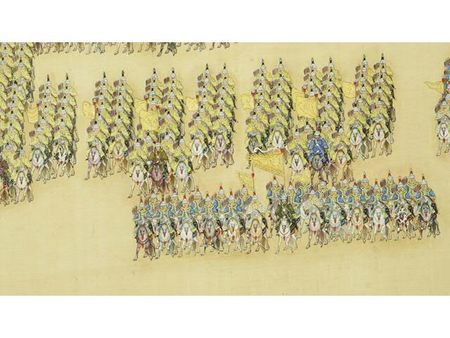

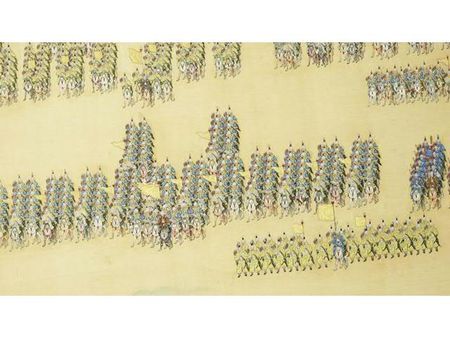




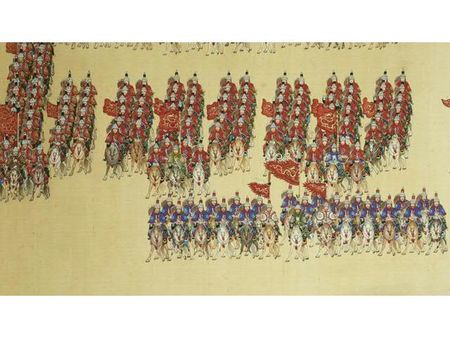

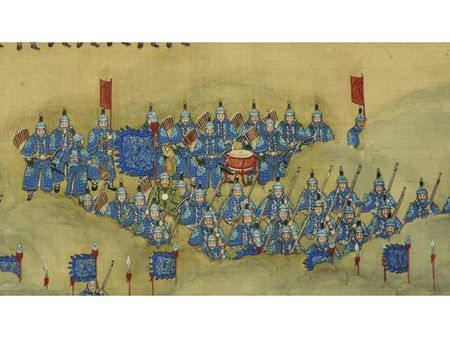

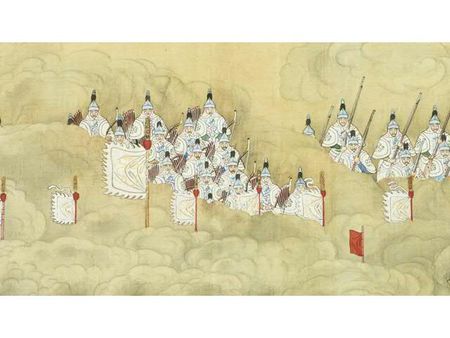


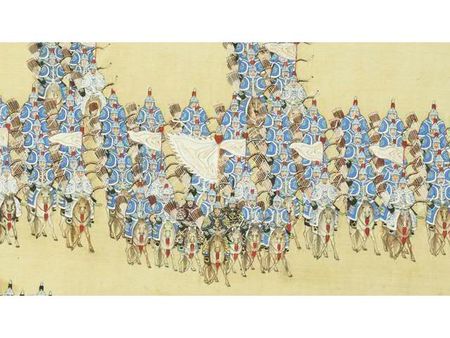



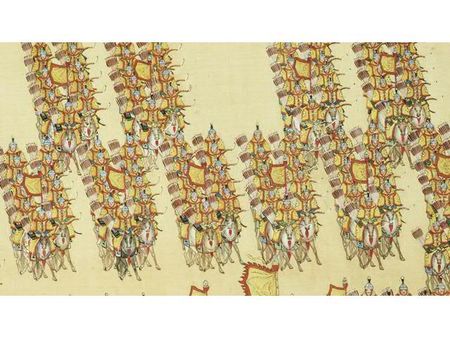


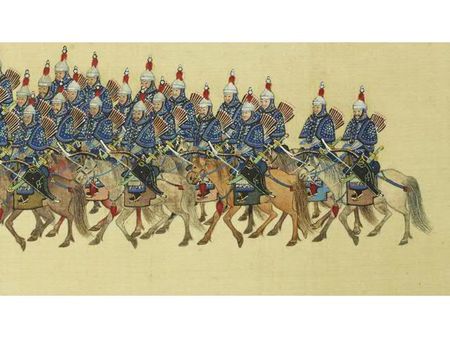






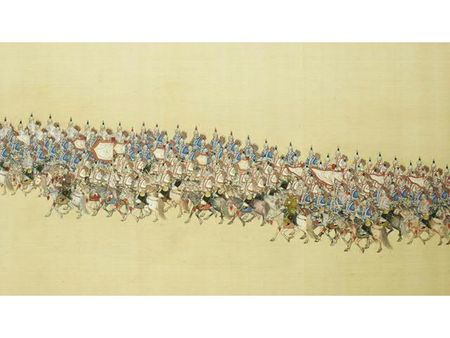


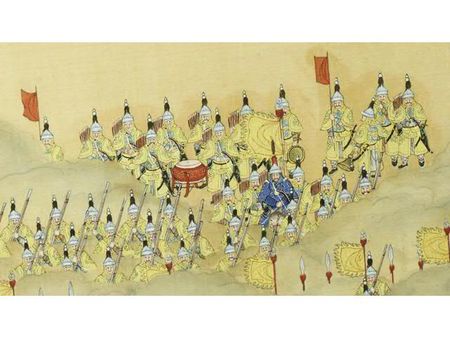
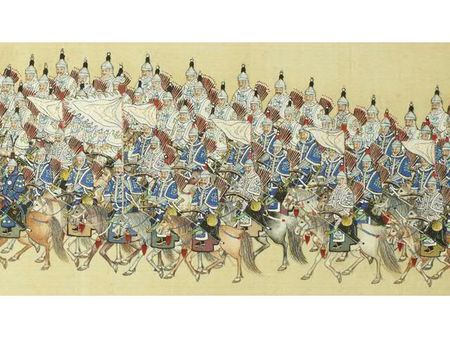


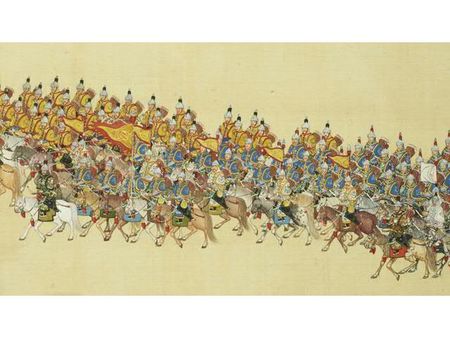



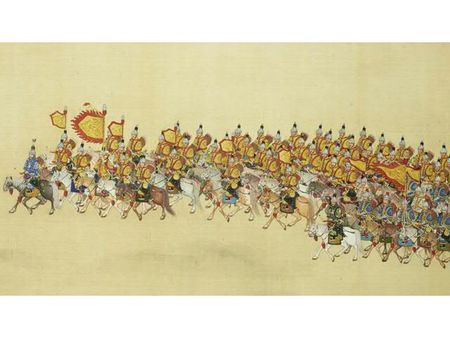

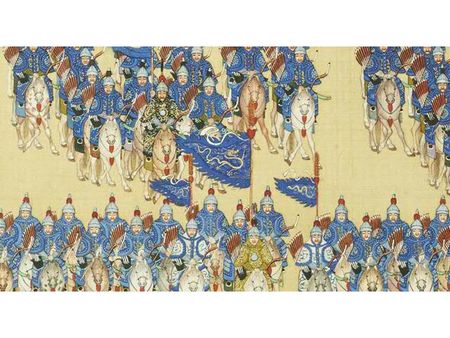





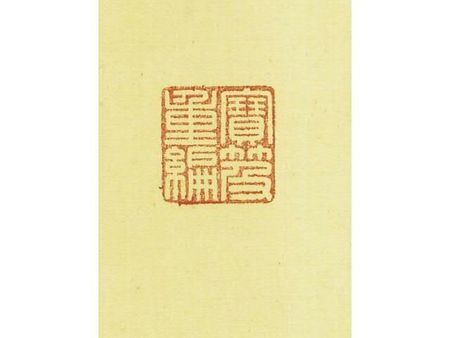





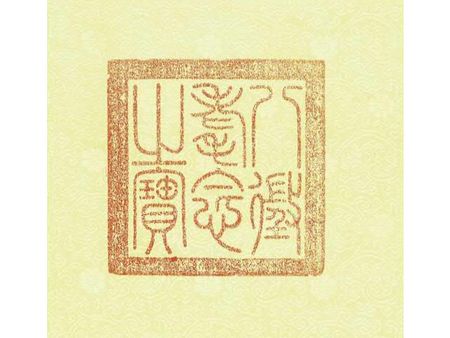

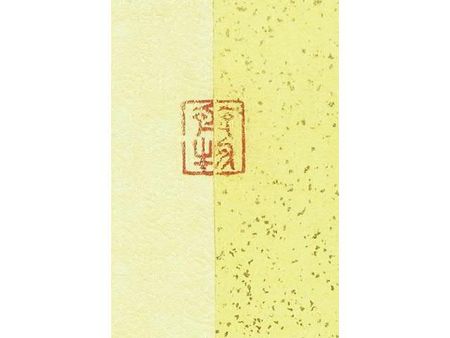
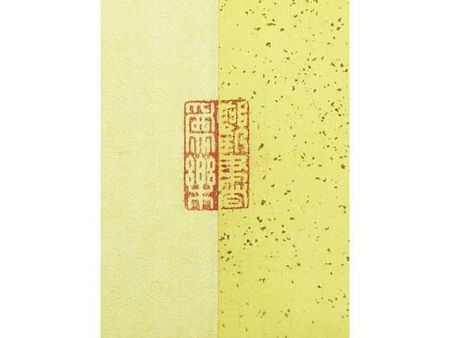


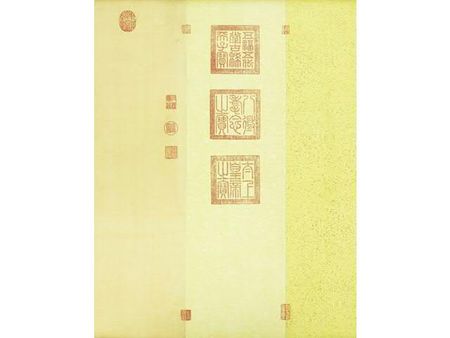
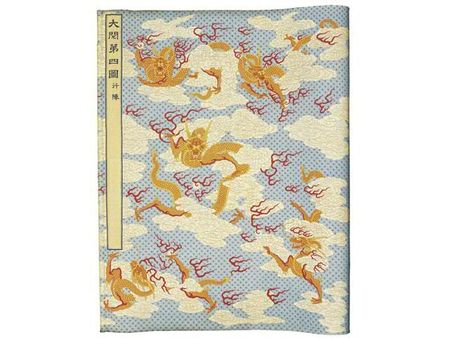


/http%3A%2F%2Fstorage.canalblog.com%2F69%2F41%2F119589%2F66442018_p.jpg)
/http%3A%2F%2Fstorage.canalblog.com%2F79%2F93%2F119589%2F66332124_p.jpg)
/http%3A%2F%2Fstorage.canalblog.com%2F07%2F58%2F119589%2F66162589_p.jpg)
/http%3A%2F%2Fstorage.canalblog.com%2F08%2F23%2F577050%2F66118876_o.jpg)